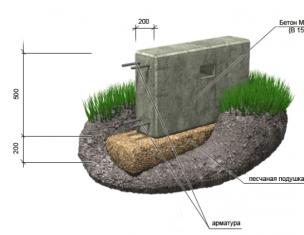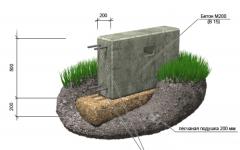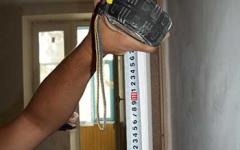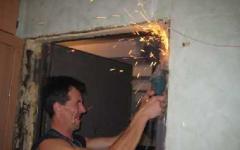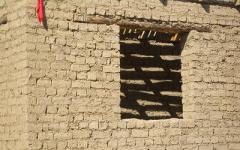Welcome to Design Learning Center country houses. Let's get acquainted. My name is Vitaly Zlobin, I am a practicing architect and head of a design company. I have two diplomas of higher architectural education and postgraduate studies at the Moscow Architectural Institute, plus 10 years of experience as a practicing architect. I started out as a humble assistant architect and now lead the design team. Together we create projects of country houses, according to which builders build houses without delay and questions.
You will learn about what we call presentation architecture architecture and see how architecture has a certain ability to create collective meaning and memories. How to read, analyze and understand different forms of architectural representation Socio-historical contexts behind the main works of architecture Basic principles for creating your own architectural drawings and models Relevant content for academic study or the professional career of an architect. Michael Hayes is the Eliot Noyes Architecture Professor of Architecture at high school of Design at Harvard University and Associate Dean of Academic Affairs and Interim Chair of Architecture.
I have always been interested in optimization and automation issues. project activities. This allowed us to enter the production of 4-5 individual complete projects capital houses with an area of 200-500 sq.m. per month, while the average Bureau of Architecture does no more than one or two.
I put my experience into this site and various training programs. Dozens of students have already used them, having gained invaluable experience in creating projects for country houses. The algorithm for creating a project became available to students country house tested by professionals. Our site continues to be filled with interesting and useful information.
This also includes calculations of building structures of country houses. If you know how to implement them, then your design solutions will be valued dozens of times more.
Hayes played a central role in the development of the field of architectural theory internationally. His research and scholarship has focused on the fields of European and American modernism and critical theory, as well as the theoretical issues of contemporary architectural practice. He published the work of contemporary architects such as Hannes Mayer, Ludwig Hilbersheimer and Mies van der Rohe, as well as contemporary figures.
Don't forget to add me as a friend Facebook.
Course presentation
And, of course, there are good old-fashioned drawing boards in the studios. Powerful 70-station "render farm" processes your animation without your control - it saves you time to continue the real creative process. Central activity our program - architectural design. Students work individually and collaboratively on design projects in the studio. A third of our building is devoted to studios, which are always open to students of architecture. Each student is provided with a separate studio area.
Here, students learn the skills of learning to draw, model, and build, and then move on to learning the equivalent digital skills. I think the biggest thing is the studio culture that's here,” says Roland Hudson, assistant professor of architecture. - You have this huge space for an open studio, and as a student you know very well what everyone else around you is doing, including graduate students. Everyone can work together and see how other people work.
Format: individual training.
Attention! The course is not suitable for collective purchase, because 30% of the information is given by the architect personally in individual work with the student. This is protection against piracy and taking into account the individual requirements of the student, who concludes an official contract before taking the course and receives a personalized certificate upon completion.
5 stages The course will teach you how to make projects of country houses for construction. You will know common mistakes. You will understand which algorithms are important in your work and study them. You will master the tools for creating a country house project already at the first stages of training. Each stage includes recorded lessons, handouts, group sessions and individual work with a teacher.
Do you lack the knowledge and skills to reach a higher level of designing country houses?
The program develops a basic knowledge of architecture in Year 3 and culminates in a graduate thesis in Year 6. Each year of the program includes courses in five architectural subject areas: design, representation, humanities, technology and professional practice.
Who knows better what your dream home should be like? Of course, only you! So why can't you make a project? Control the costs of construction, foreman and workers?
This class explores the fundamental principles of architecture through studio projects using drawings and models. Students design elementary building forms, starting with a room and a pavilion at various sites. Working with the basic building elements of the floor, wall, and roof, students view architectural composition and materials on the three scales of detail, building, and site. The class includes historical design research to understand how other architects have responded to similar challenges.
Attention!!! We teach the design of detached residential buildings with no more than three floors, designed for one family.
The course is designed for
1. Customers about to build their house.
Who knows better what your dream home should be like? Of course, only you! So why can't you make a project? Control the costs of construction, foreman and workers?
If you don't know how to make a house plan and save up to 500,000 rubles on design and construction, then right now you can go through the path of creating YOUR project from A to Z and see all the pitfalls with an experienced architect. This will allow you to save up to 30% of the construction cost.
2. interior designers.
Expand your professional competence and create country house projects yourself. Do you often have to work on a ready-made architectural project? And this is the framework for any design idea. After all, the architecture of the house (shape, style, materials) already dictates the concept of interior design.
If you have an architectural education, but you are engaged in interior design, you cannot make a full-fledged project of a country house without practice. The course gives a 100% practical approach. Are your customers often interested in a house project? I think yes. So answer them positively and start earning more on your services.
3. Builders.
Your knowledge and skills will be a good help for gaining new knowledge and developing the skills of a practical designer. How often have you had such that the customer asked about the possibility of developing a project, and you answered him with a refusal? Have you often had to build and carry out finishing without a project? If you could make projects yourself, it would solve a lot of problems. Build according to your projects and offer a full range of services to your customers.
Architectural history and theory - 20th century
This class is an overview of the latest modern architecture focused on Europe and North America. Buildings and urban projects are located in their social and political context and the theoretical constructs that influence their development. Students are exposed to correspondence archives and resources to study local contemporary buildings and their architects.
This class examines aspects of building technology that act as primary generators architectural form: structure, material, light and sound. The construction process is considered in terms of materials, methods and sequences. The principles of constructing the structure and methods of structural analysis are introduced. The physics and perception of light in constructed environments are studied. Quizzes and texts are complemented by studio exercises.
In order to make sure whether you need this course or not, answer the following questions:
Do you want to create your own country house project, made according to all the rules and standards?
Have you looked through a bunch of magazines and websites in search of beautiful houses, but, in the end, came to the conclusion that they also need to be designed correctly?
Have clients approached you for the design of country houses?
Did you refuse them because of doubts about your abilities?
Do you make projects by hand (draw on the cells in a notebook), but would you like to own computer programs?
Do you know how to build a house, but do not know how to make a project according to all standards?
Do you lack the knowledge and skills to reach a higher level of designing country houses?
The course consists of the following steps
❖ Stage 1 ❖
Learning the program for creating layouts >>>

The course is divided into history, technology, theory, professional research and design. All areas are interesting, but the most difficult is the design. Technology can also be challenging if you struggle more with math and physics. We produce design work which include briefcases, models, sketches, technical drawings and atmospheric drawings. Professional studies include technical drawing by hand and ultimately digitally. 1st year, Newcastle University.
In Bath it's very technical and you have to know how the building will stand. Detailed design plays a huge role in the evaluation process. In the first year, we must complete three solo projects and one group project with civil engineers. For the project, you will be provided brief information. All of your work then needs to be presented in a brochure and presented in a crit where you have to present your idea to practicing architects and they critique it. Very independent, usually only one lecture day a week and eight to ten hours a week.
A powerful package for BIM-design, which combines the ability to create drawings with any degree of detail and create a 3D model. And all this without leaving one program! A user-friendly interface and a well-functioning design system will be understandable even to people who are farthest from creating projects for country houses (the current version is in the lessons of ArchiCAD 16 or 17).
D Distance learning
The projects created by the teachers are very diverse and allow a lot of creativity. Most of the work is project portfolios that you work on throughout the year - but along with that are some essays and group work, but the focus is on the design portfolio.
Your first step towards becoming an architect
Year 2, University of Westminster. Bachelor of Design in Architecture. Depends on your qualifications, citizenship status. Australian citizen international student- New Zealand citizen - Australian permanent visa - Permanent Australian humanitarian visa.
In the ArchiCAD program you will learn drawing (creating layouts). You can easily arrange drawings in any format.
The result is the skills and abilities of fast and high-quality drawing:
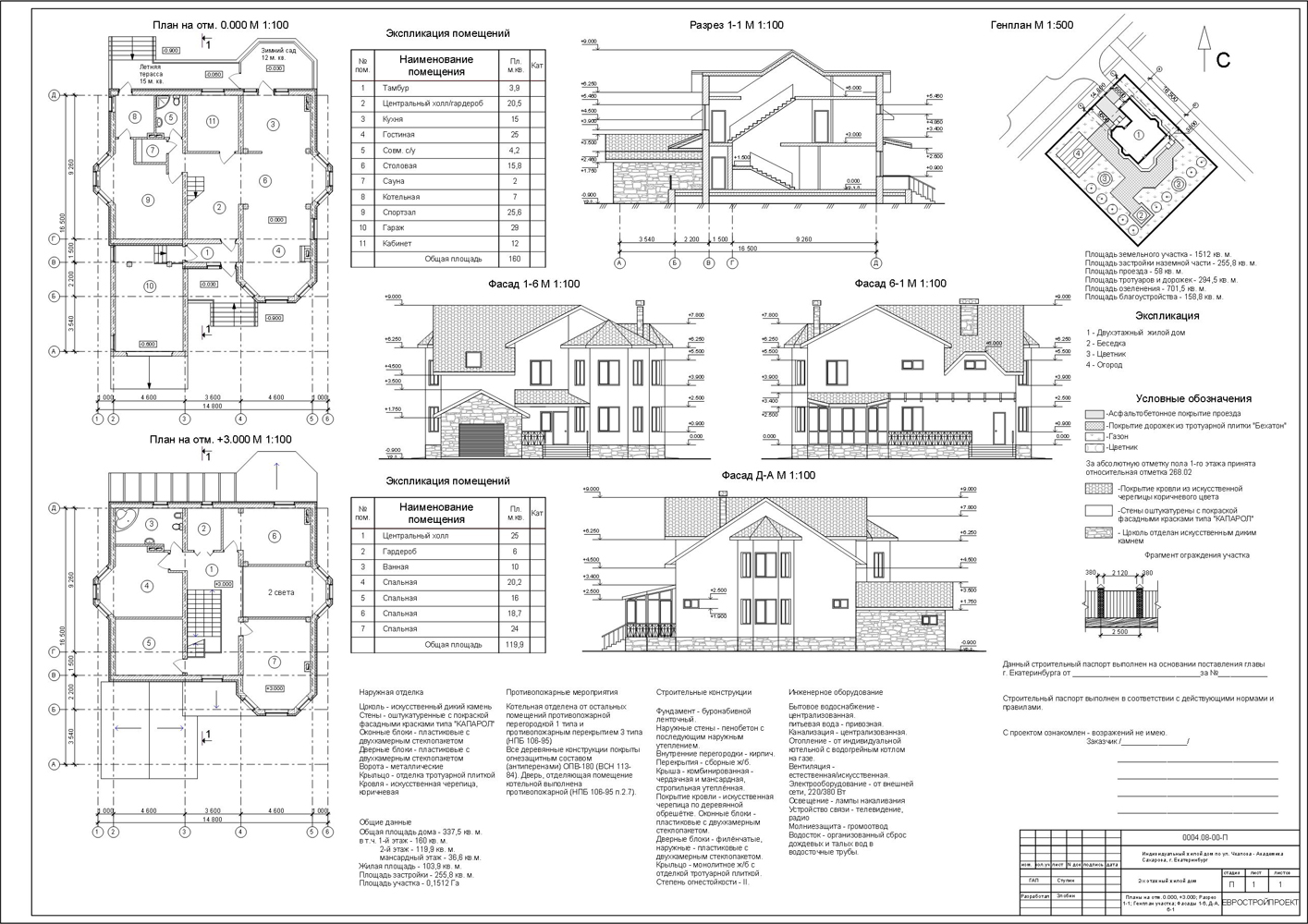
Reviews of students who have completed the course
The information on this page, based on your choices, is a guide only and is subject to change. The Bachelor of Architecture in Architecture can work full-time for three years or four years with honors. In each semester of the degree, you complete the core units and may choose one choice in architecture in architecture, architecture, design, or planning. There are also opportunities for you to study in other faculties at the university.
Each semester revolves around a studio that explores aspects of the design process that are directly related to the practice of the architectural profession. The studios are complemented by major divisions in architectural history and theory, communications, technology, and art workshops. The teaching methods in the course will include studio work, lectures, workshops, excursions and workshops.
After studying the 1st stage, you are guaranteed to be able to work in the field of design, carry out drawings of country houses. However, in order to learn how to create country house projects, you yourself need to go through the following stages of the course.
❖ Stage 2❖
Learning 3D modeling and visualization tools (creating photorealistic images) >>>
After you learn how to create layouts for country houses, you need to explore the possibility of 3D modeling and a visualization package. Photorealistic images are the cover of your project, this is what customers look at first.
We continue to study ArchiCAD, but for 3D modeling:

Semester Credits Required: 24 Total Credits Required for a Full Degree: 144 Estimated Progression Based on Semester Records 1. The Bachelor of Design in Architecture requirement is that you pass all of the major units for the degree. The school has created a series of thresholds that students must pass through in order to move on to the next stage.
Did you refuse them because of doubts about your abilities?
The studio is central to the Bachelor of Design in Architecture and the teaching is structured in such a way that knowledge and skills gained in one semester build on knowledge learned in the previous semester. While architectural history and theory, communications, technology, and art process units are key, they are taught in relatively autonomous ways that complement the work in the studio. If you opt out of any of these devices in the first year, you will be allowed to advance to the second year, but you will still need to re-enroll with the failed divisions and transfer them yourself.
Then Artlantis:

There is also a special opportunity to study:

Inferior in terms of capabilities to the ArchiCAD program (not a BIM design program), but it wins in the simplicity and speed of creating a project. The program is more suitable for draft design. In it, you can quickly and efficiently create a 3D model of a country house and schematic drawings. And most importantly, this is a built-in Vray plugin for photorealistic rendering.
Result:

After passing the 2nd stage, your arsenal will be significantly enriched. Now you can not only make drawings, but also create photorealistic images of projects.
❖ Stage 3 ❖
Fundamentals of architectural design of cottages (creation of an album with sketch drawings) >>>
In order for the customer to understand what his future home will be like, an album with a Draft Design is needed. In this project you advertise yourself: its individual design, content and availability of your contact details - all this is the best business card of you and your business. This album displays all the information on a country house in the form of schematic images of the site plan, plans of all floors, sections, facades, as well as selection finishing materials. The stage is divided into large parts:
Part 1. Fundamentals of drawing in architectural design.
Part 2. The premises of the house and the algorithm for creating convenient layouts.
Part 3 Volumetric-spatial and constructive modeling of the house.
Part 4 Rules for designing an album with a draft design of a country house.
Part 5 Scheme of the planning organization of the land plot (master plan scheme).
Result:

After passing 3rd stage, when you design your first country house as part of the stage, you will understand the whole logic of creating a project and are guaranteed to be able to carry out Draft designs of country houses.
After you know the composition of the project and the basics of design, you can go to a higher level and build luxury homes:

However, it will be difficult to build according to your drawings, because. working drawings of a country house are needed. You will learn how to perform them in the following steps.
❖ Stage 4❖
Specialization in design by choice and calculations >>>:
- Wooden frame houses;
- Stone houses (houses made of foam blocks and bricks).
The market is arranged in such a way that it is more profitable for beginners to start working in one narrow design niche and achieve results in it. So there are more chances to gain a foothold and find your target audience. Study the design features in one or more of the most popular niches in Russia and the CIS countries and you are guaranteed to become a specialist in your chosen niche.
Specialization gives in-depth understanding of a particular construction technology. The project must take into account all the design features of the technology. The type of foundations, wall thickness, span width, etc. depend on this. The material also affects the value of the house and planning decisions. You have the opportunity to study two specializations.
The stage is under constant development. I record videos on new construction technologies, materials and calculations, and also conduct private webinars.
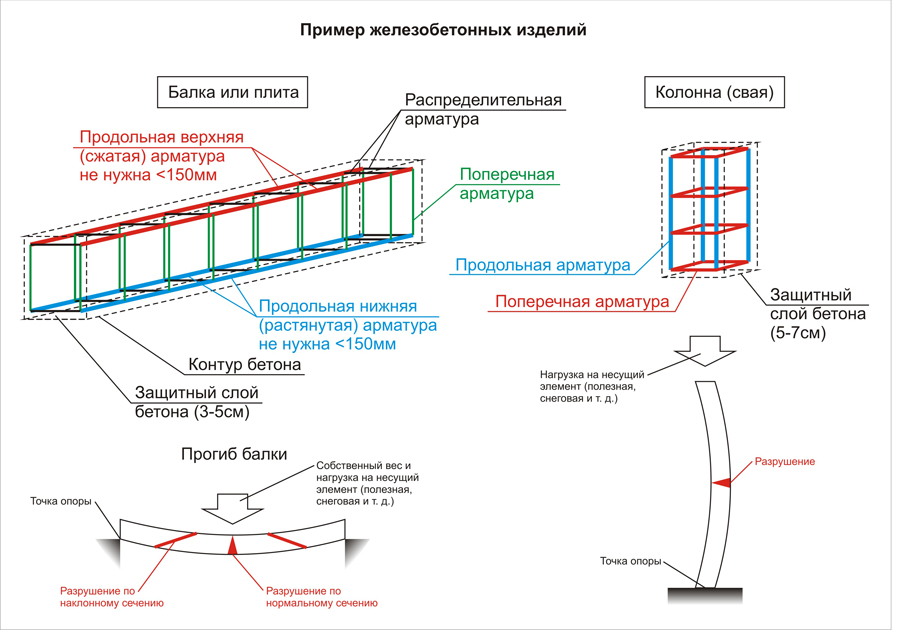
Structure of the section with calculations of the 4th stage for 2017
Theoretical mechanics, strength and design of country houses
- Basics theoretical mechanics(forces, moments, reactions of supports);
- Construction of calculation schemes (GNS, equilibrium conditions of systems);
- Construction of diagrams of transverse forces;
- Construction of diagrams of moments;
- Construction of longitudinal force diagrams;
- Calculation of statically determinate frames;
- Calculation of statically determined multi-span beams;
- Calculation of sections of floor beams from various materials;
- Calculation of sections of floor beams from monolithic reinforced concrete;
- Calculation of the section of columns from various materials;
- Calculation of masonry walls from various materials;
- Analysis of soil conditions for the foundation of a country house;
- Calculation of strip foundations;
- Calculation of pile-grillage foundations;
- Calculation of slab foundations;
- Collection of loads in country houses.
This also includes structural calculations country houses. If you know how to implement them, then your design solutions will be valued dozens of times more.
Expert
Currently being developed special closed program “Practitioner”, which includes all previous internship programs at HOMESPRO in Moscow. Cost - as in the program "Expert". Only those who show good results in basic training will be able to pass the practice. Details can be found by asking the author.
Is it expensive or not?
For customers who want to design their own house on their own: compare the cost of training with the cost of designing a country house in companies - this is about 800-1200 rub/sq.m. In addition, do not forget that during the training you will gain invaluable experience and architectural and construction knowledge, which will allow you to control the entire construction process and not overpay.
For designers who want to learn how to design country houses: the price of education in an architectural and civil engineering university is about 200-300 thousand rubles per year, multiply by 5-6 years of study and compare with the cost of our courses.
Obviously, the sooner you start taking the course, the it will be better for you, because the prices for expert knowledge in the field of suburban construction are rising every year.
Guaranteed learning outcomes
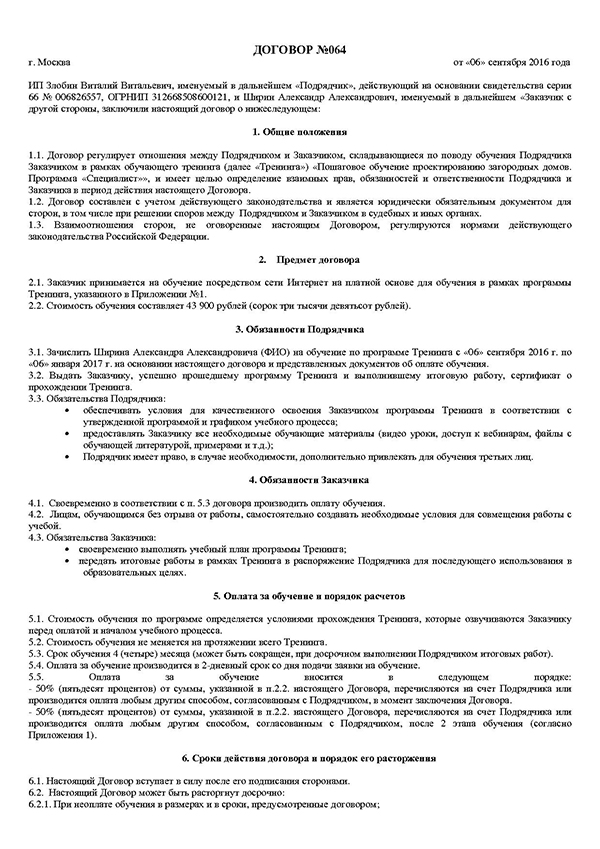 Official contract
Official contract
Training cannot begin without the conclusion of a formal contract for any of the programs. The appendices to the contract spelled out the phased structure and the result of training.
Reviews of students who have completed the course
Grigory Vladimirovich, Khabarovsk
Good day!))) It’s morning here (in Khabarovsk), it’s still night in Moscow, so my greeting sounds exactly like that. For 15 years I have been engaged in construction, which has not been built during this time, especially since technologies are constantly being improved, and therefore I have to constantly finish my studies. In the spring of 1912, several people approached me with a request to build frame houses for them. I accepted the proposals, but there was a snag, namely with projects. One from Moscow was discharged, it turned out to be a pig in a poke, although it was called a working project, in fact it was impossible to work with it, the nodes were not traced, there were no wall areas, roofs, ceilings, there was no material specification. If not for my experience, the workers would not have built this house without me. The next customer brought me three pictures from the Internet, according to which we tried to order a project, the terms (1.5 months) that we were offered did not suit us, since the house had to be completed before the cold weather. IN common house built from pictures. I will tell you this is not an easy task, the workers do not understand what they want from them, they ask for drawings, but what to do if they are not. I myself had to jump along the ceilings, then jump along the rafters, personal experience to share.))) With each such jump, the desire to make projects increased in arithmetic progression. I decided that in the winter, after the end of the season, I will definitely do this. Winter has come, met New Year and I began to look for where I can learn design frame houses. Ask why wireframe? I will answer, because it is more difficult to build these houses, there are many little things that you can not take into account or simply not know, and then this will affect the performance of the whole house.
I found an organization in Moscow that offers a software package for the design of frame houses and is trained to work in this program. Phoned, agreed and already purchased plane tickets and then accidentally stumbled upon the courses of Vitaly Zlobin. I watched a free webinar, got acquainted with the program of the first training, everything turned out to be very necessary and decided to pay for the training. As usual, quite a few advisers appeared that they would be deceived or they simply wouldn’t work out the money in full, but I decided to take a chance, even if I lose money, then 10 thousand) the amount is not great. I called Vitaly, talked, the first impression was positive, we discussed with him the issue that the time of the classes is not very convenient for me, since the time difference is 7 hours, after all the questions were resolved, I paid for the classes. After some time, the training began and I received the first part in the recording, all the material turned out to be useful and interesting, the following parts also did not disappoint. It was time to go to school, I went to study design for a week, a very tight schedule did not allow me to study Vitaly's training at the same time. Returning home, he began to strenuously pull up his tails, the last lesson was supposed to be individual and the time for it had already been agreed, I didn’t want to feel like a loser who had no time to learn lessons.))) Three nights were enough to master Google SketchUp, drew the first house, experienced a great sense of pride (he did it himself), there were only a few questions about using the program. I wrote questions in a letter, sent it and received answers on the same day.
Then another client called me, he wanted to build a foundation for the future house, I used to take and build, but this time I decided to apply the acquired knowledge. He asked questions, it turned out that the foundation of the size proposed by the customer would not fit the proposed layout of the house. Before his eyes, he sketched the layout of the house, he liked it, in the evening he drew the foundation in an hour, set the dimensions and sent it to the Customer. The next day we signed an agreement, in 2 months we will start (at sub-zero temperatures we try not to pour foundations). Half a year ago, I drew fundamentals for a ruler, since they taught me at the university, it didn’t look very modern. Now it is a completely different matter, the influence of scientific and technological progress, new opportunities, is on the face. Without ruler architectural project I’ll draw a picture at home in 3 hours, and this is additional money and it’s more convenient for the client to work with you, you will draw a picture for him and you will build a house for him.
Let's go back to the tutorial and its creator. What surprised me the most was that Vitaliy himself calls, he himself is interested in how I learned the course of study. All my questions were discussed online, he spent more than enough time. He worked out the money for one hundred%, there is a desire to continue studying in his studio. Sorry for such a long review, but if I already sat down to write, then everything should be described in detail, otherwise it was not worth starting.)))

Alexey, Krasnodar
The last session is over. It was not I who studied, but two of my employees in the company, so I will retell their opinion here.
I must say right away that all expectations were met. Educational materials are presented in a very accessible language and can be put into operation almost immediately. There was a slight difficulty with learning via the Internet, but this is apparently because they are used to studying the old fashioned way at a desk. It's still new technology. My co-workers made each according to the project of a country house under the direction of Vitaly, one of them was a real project, so we immediately killed two birds with one stone, which in my opinion is very practical.
Now about the courses themselves. I liked that Vitaly can change the time of classes and goes to a meeting with answers to all questions. We never had to slow down the training, everything went smoothly and with a bang. I liked that during the courses, the students studied a simple but easy-to-use program along with the ability to design at home. It is very good that this course also tells about the design of the project, which is important, because clients always like good design. And by the way, about the clients, the customer really liked the house that we made as part of Vitaly's course, now we are finalizing it and I would like to start building it this year. It is already getting warmer in our region, and we already have a project.
 Ushakova Vera, Zhukovsky
Ushakova Vera, Zhukovsky
All the information on the course was very useful and interesting for me. every time, with every lesson, I learned a lot of new things. The whole course is built very competently, structured, accessible and interesting, thank you very much, Vitaly.
Purpose of learning (task): to study Archicad and Artlantis Studio (in the context of low-rise housing construction using SIP technology).
Starting Skills: I have not studied any of the programs (including in theory).
Result:
- She mastered both programs at the user level (which allows them to be actively applied in practice in the design and visualization of low-rise buildings using the vulture technology).
- Duration of training: from March 2013 to April 2013 inclusive, with a frequency of classes 2 times a week for 2 hours.
Additional opportunities subject to training with a teacher:
- The teacher is a PRACTITIONER!!!
- The curriculum was formed specifically for my tasks (i.e. nothing more).
- More precise processing of the material.
- Analysis of practical homework ( important point for me, because it was during the work with homework that, as a rule, difficulties and additional questions arose).
- The ability to coordinate the time and date of classes with the teacher (which allows you not to get out of your personal schedule).
- Possibility of consultations on-line (remotely), including after training.
Orientation program of my training course Archicad:
- The purpose and capabilities of Archicad.
- Principles of working on drawings.
- Technique for creating floors, walls, windows, doors
- Working environment and its settings.
- Lines and their uses
- Library use.
- Creation of floors.
- Creation of stairs.
- Creation of pitched roofs.
- Creation of other roofs.
- Working with dimensions, their input and modification.
- Preparing for printing.
The indicative program of my Artlantis Studio training course:
- Artlantis Studio interface. Cameras.
- materials
- Objects
- Visualization
- Preparing for printing
Sincerely, Ushakova V.
 Elena Kostyukova, Beloyarsky, KhMAO-Yugra
Elena Kostyukova, Beloyarsky, KhMAO-Yugra
I would like to say a few words about the first stage of my training in designing country houses in the ArchiCAD program under the guidance of architect Vitaly Zlobin and what prompted me to take this training.
The fact is that this topic (designing a country house) is very close and interesting to me at the present time, since my husband and I were just about to realize a long-standing idea of \u200b\u200b"the house of my dreams" and therefore I considered it very useful to undergo such training independently, so that later, accompanying the construction as a customer, it is better to understand the details and prevent irreparable mistakes.
Due to the fact that the training program for designing country houses is very well-written and, at the same time, very accessible for understanding, the range of possibilities and tools of the program is really very wide, and the teacher’s patience is limitless (J), learning, in my opinion, is as effective and interesting as possible. . It is also very important to note that the lessons or their corresponding parts can be reviewed several times in order to perform some operation that is not immediately successful or may be forgotten over time.
As a result of this training, I managed to remember what seemed to be long and firmly forgotten: after all, my first education was received in the specialty “Industrial and Civil Engineering” (in my case, this is an example of a persistent and unsuccessful parental choice). More than 25 years ago, when, after studying, I worked as an engineer in a design team, it was impossible to even dream of such a program as ArchiCAD! And I hated the devil! And, having changed my job with joy a long time ago, I didn’t even think that I would ever have to return to this, especially since the knowledge and skills acquired then, as unnecessary, were long forgotten. And now, taking into account the realities, new life circumstances and the accumulated experience and knowledge in other areas of activity, I have a completely different look at creating with my own hands (and brains) the project of my future home. Especially when such a program can be used as a tool! This training, in my opinion, opens wide opportunities for development and creativity, and the ArchiCAD program is a fairy tale (for those who understand)!
Thank you very much, Vitaly!
Andrey Kuznechenkov, Moscow
Thanks a lot!!! Vitaly!
P.S. I even thought about changing my profession 😉
 Konstantin Surkov, Irkutsk
Konstantin Surkov, Irkutsk
From an early age, I thought about my own home, in which it would be cozy, warm and everything I needed. browsing a lot standard projects on the Internet, I found what I like at different houses: at one appearance, another has a layout, a third has furniture arrangement. But I did not find such that everything was as it should be. I started to be interested in architecture and design in order to create "my" house, in which everything would be to my liking. Many subtleties, many questions arose in the process of self-study, and one day, I accidentally saw training courses for all this on the site 7floor.ru
The cost at first seemed high, but this is only from the beginning. and besides, it pays off, because the purchase finished project houses cost twice as much, and individual project generally every 5.
My training lasted about 3 months, during which Vitaly contacted me 1-2 times a week, told me, answered questions, consulted, checked the assignment, helped solve my difficulties and introduced me to the world of design from stage to stage.
After completing the course, I received sufficient knowledge about the technologies of construction, design and design of country houses. I created a house project that I like and I can also change it and change everything I want. I studied the program of Archikad and Atlantis quite deeply. And has already done several projects for friends and relatives.
The course is very useful and probably the only one of its kind so far (lessons on YouTube will not give such a result). Of course, it was not quite easy to study, I had to devote 2-3 hours every day, but the result was obvious.
If you have the desire and financial ability to study design, then I would recommend Vitaly Zlobin as a teacher and a professional in this matter, and just a person with whom it was pleasant to communicate throughout the entire training!
Konstantin Surkov, economist. Irkutsk 2014
 Yuri Nazarov, St. Petersburg
Yuri Nazarov, St. Petersburg
Starting training, I wanted to achieve certain goals - to enter the design environment of country houses, without having an architectural education, but only a little construction experience and understanding of the work of some structures. The program was chosen by "Expert", because it is the most complete, and if you really study something, then do not stop halfway.
Going through each of the stages and looking back, I could not understand how I could make such mistakes. course study building structures, and there a more calculated block required a lot of effort, including work with textbooks and articles. Time had to be found almost every day, and on the way to and from work, sometimes I used every opportunity to watch a video, make calculations and look through examples of work.
During the training, you can’t immediately determine the level at which you are now and, I could understand this only when, already at the 5th stage, I got a job in a company engaged in the design of country houses. Having worked in it and talked with a large number of designers and architects, I realized how high a level of knowledge training from Vitaly provides. I never felt undereducated or lagging behind among people who had education and work experience behind them, moreover, usually a person could navigate only in the environment in which he has been working for the past few years - either calculations, or the AR section, or geology and foundations. And communicating with each of them, I understood everything they were talking about, and could freely navigate in their areas. This should give an understanding of how powerful learning is, and it really is.
And I will say this separately - Vitaliy gives a very high level of design, so far I have
I have not met a high level in work, and the projects that you learn to do are more than competitive in the design market.
I also wanted to say separately that the design school is just an amazing opportunity to gain knowledge that is almost impossible to find anywhere else, and even in such a convenient format. And this is a great project that will help make our business and construction and design more professional. I wish him only development and prosperity, because this is what our country really needs now, such an affordable opportunity to become a professional.
Preparatory courses are intended for those who plan to enter the Moscow Architectural Institute or other higher architectural and design schools in Moscow. Moscow Architectural Institute teachers have developed a dozen programs that take into account the various preferences of future students and prepare them for entrance examinations. Duration of programs - from one year to three; schoolchildren of 8-11 grades and graduates can study. All programs differ in content, but are guided by the requirements of the entrance exams. On the page of the program, authors and teachers are indicated, given detailed description content, recording period, timing.
L Summer schools
Summer schools are held for (one month in July for students in grades 7-9 and older). The ideas that inspired the teachers of the Summer School in 2014 came to us simultaneously with the appearance of new friends - employees of the Aptekarsky Ogorod Botanical Garden of Moscow State University. Having visited the Pharmaceutical Garden in summer, autumn and spring, we realized that young Muscovites and guests of the capital, who stayed in Moscow in August, really lack peace country garden, greenery and flowers. And all this can be found in the city center, near the Garden Ring, near the metro station "Prospect Mira" in the Botanical Garden of Moscow State University. We invite you to take part in the Summer School, learn more about plants and learn how to draw them. The second program of the Summer School is related to literature and art and teaches book illustration. teachers preparatory courses who graduated from the Moscow Architectural Institute and have been working as book illustrators for many years, will share their experience. The basis for drawing illustrations will be drawings made from nature and literary works.
S Schoolchildren
The courses that we offer to students in grades 8-10 are similar to programs for preparing applicants. Their authors are MARCHI teachers who represent what students lack for successful studies at the institute. Most programs for students teach various art visualization skills. When creating a new form or coming up with a spatial solution, an architect and designer must be able to depict an idea, visualize it. The more diverse and richer the visualization skills, the wider the author's palette, the more opportunities the author has to influence the audience. The role of color in the perception of form cannot be underestimated. The properties of color were studied by W. Goethe and many of his followers, physicists, artists, and architects. For architects and designers, color is the most important means of creating a spatial image. We offer schoolchildren several author's programs, united under the name "Architectural Graphics". Description of programs and their authors are on the pages of individual courses. With the help of layout and modeling from paper and cardboard, students of the initial courses of the Moscow Architectural Institute learn the basics of architectural composition and design. The prototyping program for schoolchildren was created in the 90s of the twentieth century by a group of teachers from the Department of Fundamentals architectural design. Modeling for schoolchildren is easier than the 3D Composition course in the Bachelor of Architecture academic program. But it perfectly develops spatial thinking and teaches the basics of professional visualization, helps in the formation of professional consciousness
P Professionals
The idea of creating the Center additional education and the development of advanced training programs for architects, designers of the architectural environment, urban planners, restorers, as well as all specialists interacting with them, was first announced in 2013 in the "Concept for the Development of Preparatory Courses at the Moscow Architectural Institute for 2014-2025." and assumed the creation of conditions for the development of interdisciplinary and interprofessional interaction. The first programs were developed jointly by MARCHI teachers and partner organizations - Moscow State University (Moscow state university), MGUKI (Moscow State University of Culture and Art), RGAIS of the Russian state academy on intellectual property). The cooperation of architects with lawyers, patent experts, teachers, biologists and other specialists contributes to solving urgent problems that arise in the process of architectural practice and architectural education. More detailed information about the programs is available on the respective course pages. Several advanced training programs are posted on the Internet site of the Open Courses in Architecture (www.open-marhi.ru). This material can be used without restrictions. Be sure to cite the source of information and mention the names of the authors of the programs.
T Teachers
Many leading foreign universities conduct advanced training courses for secondary school teachers. University teachers, scientists and students have a high intellectual potential, which is constantly replenished by practical work and scientific research. MARCHI teachers, as well as foreign experts, consider it necessary to share their knowledge with school teachers. For the first time, Moscow Architectural Institute cooperated with teachers visual arts, MHK, biology and physics of the Central Administrative District of Moscow took place in 2009-2010. We have purchased new experience which formed the basis of modern advanced training programs. This direction is very important for improving the pedagogical competencies of bachelors and masters of architectural and design specialties. Moreover, some graduates of the architectural faculties of Russia work at the school. Detailed information about current programs, terms of their implementation, cost and other data can be found on the relevant pages. The Internet site of the Open Courses in Architecture (www.open-marhi.ru) contains past programs with examples of completed work. You can use this material freely, at your discretion. Do not forget to link to the source of information and mention the authors of the programs.
D Distance learning
Many training programs are available online. The technology of mastering the programs does not cause difficulties. We offer distance learning for applicants, professional architects, designers, landscape architects and other professionals, as well as teachers. Unlike full-time education, you can study remotely in a convenient mode, being many kilometers from Moscow. Training takes place in the ASSA (Architectural Self-Serves Age) system, created at the Moscow Architectural Institute and having an international certificate. The system contains a digital methodological fund of photographs, drawings, drawings and recommendations that help complete tasks. You can find out about the technology of training, application deadlines, available courses and sign up for them on the website distance learning: www.distant-marhi.ru. Communication with course administrator: [email protected]




